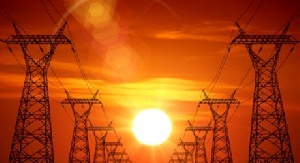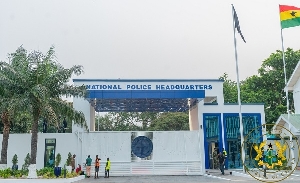Ghana needs to utilise innovative energy strategies to mitigate the impact of the current generation shortfalls culminating in the intermittent disruptions in power supply ? says S. O. Nyarko, Founder and President of Enercom Africa.
Demand-side reserve and response would be one such innovative strategy that can be used to mitigate the generation shortfall situation by creating a proper and coordinated reserve from large energy users, he has said in an article published below:
Utilise Innovative Energy Strategies To Manage Ghana’s Power Crisis
Ghana needs to utilise innovative energy strategies that will help mitigate the impact of the current generation shortfalls culminating in the intermittent disruptions in power supply (‘dumsor dumsor’). Such initiatives will provide quick wins for all and also eventually form part of our long term energy management strategy. It is a known fact that Ghana needs to increase the generation capacity to bridge the gap between demand and supply. Numerous deals have been undertaken recently to increase generation capacity in the near future. These are very necessary, but would do little to actually ease the pain of power interruptions Ghanaians are going through now. We need some effective measures too now.
The current load shedding, which has been intensified from around 400MW to 600MW recently is not only having adverse impact on residential consumers, but also small businesses that are sited within residential enclaves. Key social infrastructure such as hospitals and educational institutions are also sometimes affected when there are spontaneous and sustained interruptions to power supply caused by system frequency deviations.
There are however useful and proven innovative strategies and initiatives that are utilised in other countries to manage periods of generation shortfalls and reserve deficit. In the UK for instance, such innovative strategies and initiatives provide useful means of balancing and securing the power system when reserve is eroded by plant shortfalls and coincident peak demand.
Ghana's current total installed generation capacity is approximately 2.8GW. However even if all the installed generation capacity were available, the derated generation capacity would be about 2GW. With the current national demand peak around 2GW, this means that even if all the installed generation was available, there would still not be any useful reserve capacity.
Demand-Side Reserve & Response would be one such innovative strategy that can be used to mitigate the generation shortfall situation by creating a proper and coordinated reserve from large energy users. Such Demand-Side Reserve & Response would be backed by embedded generation. Providers of the reserve and response would receive capacity payments to mitigate any impact on their financial portfolio and to also avert the social cost of potential job losses.
This will provide the incentive for large energy users to reduce or shift some their demand to other periods or change their consumptions patterns. The technical and economic benefits of this innovative strategy would make it useful in dealing with our current power crisis and also form part of the long term energy management strategy. Even in the UK with sufficient reserve capacity, on average 43% of the current total operating reserve is sourced from demand side (demand reduction/shifting and embedded generation).
Energy innovation projects can also be undertaken to reduce power system losses and improve network performance to enhance energy delivery. Ghana currently has total transmission and distribution losses of 26%, driven mainly by distribution losses of approximately 22%. This means that even if Ghana had 2000MW generation available to meet our peak demand of around 2000MW, about 500MW would be still losses. Of the total distribution losses, technical losses account for 12% and the remaining are non-technical losses.
The technical losses can be reduced by measures such as replacement of poor performing assets, effective constraint management techniques, use of shunt capacitors, among others.
Non-technical losses can also be reduced using network monitoring and energy theft detection technologies. Reduction in total system losses will improve efficiency and minimise the volume of load shedding or unserved energy.
Ghana is currently in the top 30 countries with the highest total transmission and distribution losses in the world. It should be interesting to note that Zimbabwe has one of the lowest total transmission and distribution losses in Africa at around only 4%; compared to that of Ghana at 26%. Zimbabwe does have a generation deficit too, and a slightly different complexity in demand and power system. But that notwithstanding, about 4% total transmission and distribution losses is efficient. South Africa with a much bigger economy, slightly complex demand and power system has total transmission and distribution losses of roughly 10%.
If such levels of efficiency in managing power system losses can be attained by other countries in Africa, then Ghana can do more to reduce our total power system losses too. This will go a long way to mitigate the impact of the current crisis and also deliver savings for consumers, who are currently bearing the costs of high inefficiencies in our power system.
Effective energy efficiency measures can also be employed to help manage the current power crisis. The normal approach of using campaigns and other mechanisms to influence efficient consumer behaviour is a step in the right direction, but that alone cannot trigger the much needed changes in consumption patterns of consumers. Consumers would be incentivised to reduce or shift some of their load to off-peak periods if that transforms into savings on their electricity bills.
A Time-Of-Use tariff system with effective price sensitivities evidenced by a robust micro-macro analysis would be a more effective strategy. It may be a herculean task to roll out Time-of-Use meters for over 2m residential consumers in Ghana, but it can surely be done for industrial and large commercial consumers as an incentive to shift some of their demand to off-peak periods in return for savings in their energy costs. Control technologies can also be used to shift demand load in a coordinated manner to normalise the demand profile.
Such innovative energy strategies can help manage the current power crisis in Ghana by mitigating the impact of the generation shortfalls, ahead of additional generation capacity in the near future. They will also create the platform for building a more innovative power industry. With the many of such innovative energy strategies that Enercom Africa has already proposed to the Ghana power industry, I am optimistic their implementation will surely put us on the path to ending the intermittent power outages (‘dumsor dumsor’).
By:
S. O. Nyarko
Founder & President
Enercom Africa
sonyarko@enercomafrica.com
www.enercomafrica.com
Business News of Saturday, 7 February 2015
Source: Enercom Africa

















